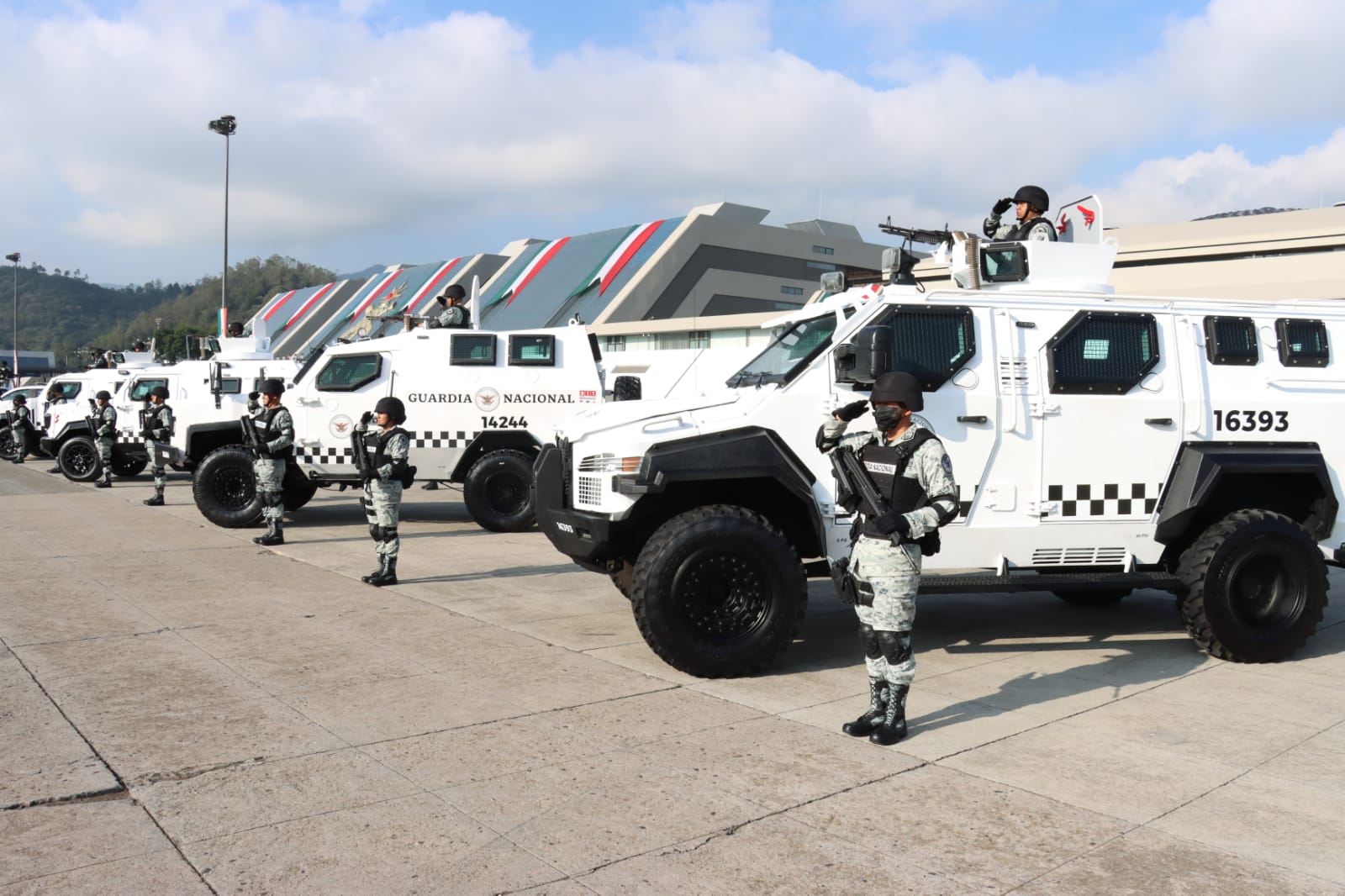
When Crime Becomes Terror: Rethinking the FTO Designation
The FTO designation raises the cost of participation by exposing cartel members to heightened surveillance, financial scrutiny, and, in extreme cases, U.S. kinetic action.
BY RUBI BLEDSOE
The seven targeted attacks on “go fast” boats allegedly carrying illicit drugs in the Caribbean awakened discussions in the policy and legal communities on the legality of the strikes. While the long-term implications of designating cartels and other criminal organizations, typically considered transnational criminal organizations (TCOs), as foreign terrorist organizations (FTOs) are still unknown, some significant practical differences and similarities should be further examined. The Trump administration’s use of the FTO designation for cartels and, more recently, gangs, is a significant evolution in U.S. policy and has unlocked a suite of tools for the executive branch, as evidenced by recent events. But understanding whether the FTO label truly fits the Latin American context, and what the designation achieves in practical terms, is of critical importance as the United States considers the legality and effectiveness of tactics to counter them.
FTOs vs. TCOs: Are They Really the Same?
The primary difference between FTOs and TCOs is that FTOs, by definition, pursue political objectives, while TCOs are ideologically more agnostic and primarily profit motivated. Over the past two decades, however, the operational realities of terrorist organizations in the Middle East and transnational criminal organizations in Latin America have blurred to the point of indistinction. The financial systems and illicit networks that they use, as well as the rise in the use of violence by cartels to incite terror in local populations, and the institutionalization of organized crime in local populations, should be examined through a more nuanced lens.
First, terrorist organizations have long engaged in criminal activities to support their operations. In Latin America, for example, clans affiliated with the FTO Hezbollah have been active in drug trafficking, human smuggling, and money laundering operations in the tri-border area of Argentina, Brazil, and Paraguay. At the height of ISIS’s expansion, the caliphate benefited from smuggling and illegally selling oil from Iraq and Syria to fund the group’s operations. An EU study estimated that between 70 and 80 percent of the group’s revenue originated from hydrocarbons, extortion, and “contributions.”
Interestingly, the Cartel del Golfo (CDG) and Cartel Jalisco Nueva Generación (CJNG) both worked with a network of huachicoleros (oil smugglers) operating between the Texas-Matamoros border to Mexican ports such as Ensenada, Guaymas, and Tampico. Last March, a joint statement by Mexico’s Secretariat of National Defense, Secretariat of the Navy, Office of the Attorney General, the National Guard, and the Secretariat of Security and Civilian Protection announced the seizure of more than 10 million liters of hydrocarbons in the border state of Tamaulipas. While Islamist organizations do have strong ideological beliefs, at most times directly condemning criminal activities, the economic realities of both TCOs and FTOs cause them to engage in illicit activities. Without revenue from illicit activities, these organizations lack a lifeline.
Second, the violence used by TCOs throughout Latin America increasingly resembles the violence used by FTOs to coerce populations or local armed forces to submit to their governance. Prior to the Trump administration’s FTO designations of Mexican cartels, the Revolutionary Armed Forces of Colombia (FARC) and the Shining Path group (Sendero Luminoso in Spanish) were listed as FTOs in 1997, at the same time as Hamas and Hezbollah. The FARC’s violent tactics—carrying out bombings, political assassinations (including a role in killing presidential candidates), kidnappings, among other armed attacks—were key indicators in the evolution of violence towards a more paramilitary-style set of tactics and capabilities. But cartel-style violence has greatly evolved since the days of the FARC. Mexican cartels have used commercial drones to drop explosives on security forces or rival groups since 2020 and are now transitioning to using more refined tactics like those of the Taliban or ISIS—such as the use of improvised explosive devices (IEDs), rocket-propelled grenades (RPGs), drone attacks against adversarial armed forces, and gruesome violence campaigns against civilians. A CSIS report, for example, recorded the deployment of drone attacks by Mexican cartels in the past five years alone and registered a total of 5 drone attacks in 2020, 107 in 2021, 233 in 2022, and 260 just in the first half of 2023. Other tactics include using rocket-propelled grenade launchers and, more recently, the use of IEDs and bomb-carrying drones.
If the distinction between a TCO and an FTO hinges on their political goals, but not on their tactics, there is a danger of dismissing the calling card of these groups: the actual instillment of terror on local populations. Beyond the tactics themselves, the intent of these gruesome killings—bodies dumped in public spaces, dismemberments, massacres of alleged rivals, including occasionally at the funerals of grieving family members, and mass graves—is to incite terror in both the local populations and the government. Cartels have repeatedly massacred entire families, including children, and since 2010, have used videos to disseminate the torture and killings of kidnapped victims. Videos often show people in captivity, many of them bloodied from beatings, tied to a chair and blindfolded, with many murdered on camera. This strategy, akin to ISIS’s early issues of Dabiq magazine and terror blogs, enables drug cartels to incite fear in local populations as they fight to control trafficking areas. In 2024, Mexico reported 30,057 deaths due to intentional homicide, numbers only rivaled by countries engaged in active conflicts or civil war. For reference, the total number of casualties in Gaza, an active conflict zone, according to the Gaza Health Ministry, reached 23,842 the same year. According to a study, the CJNG has contributed to 81 percent of all homicides resulting from cartel clashes since 2013—an astronomical concentration of violence in one criminal group. In addition to the sky-high number of homicides, Mexico has over 110,000 officially registered disappeared persons, and it is also listed as one of the top 30 most violent countries in the world, just below Lebanon. While not ideological in origin, cartels’ use of violence is comparable to that used by terrorist organizations, and it must be examined more critically.
According to security experts, the definition of terrorism hinges on whether the group perpetrating terror has political aspirations. For gangs and cartels in Latin America and the Caribbean, the case has been made that these criminal organizations do not seek to govern or depart from the umbrella of the state. However, during the pandemic, both the Sinaloa and CJNG cartels stepped in to deliver food baskets in at least 10 states, not unlike a popular government program started under then-President Andrés Manuel López Obrador. In Colombia and Brazil, criminal organizations enforced curfews and Covid-19 social distancing measures, albeit with violence. While not directly running for office, TCOs have been closely affiliated with political candidates. When they are not directly supporting candidates, criminal groups in Mexico still play a large role in shaping the electoral landscape of the country by exerting political violence. A study by The New York Times found that criminal groups were involved in at least 28 of the 36 candidate killings during the 2024 election cycle in Mexico. This is a trend, The New York Times argued, that “speaks to the aims of organized crime groups to become de facto rulers of towns across Mexico, mostly for economic reasons.” All these activities juxtapose a shockingly absent state in many parts of the region, particularly remote or neglected ones, where public services and economic opportunity are largely absent.
While cartels and gangs are primarily profit-seeking, their activities are deeply political. They may not seek to replace the state entirely, but oftentimes they do seek to subvert it, providing crude forms of governance in many territories. They exert varying levels of territorial control, regulate daily life in communities, impose derecho de piso (forms of taxation), and directly influence electoral outcomes by illicitly financing campaigns and corrupting candidates. In Haiti, for example, Viv Ansanm and other gang coalitions regulate daily life by limiting the mobility of the population but also distributing food or petty cash and providing work to children enrolled as foot soldiers. According to the Global Initiative Against Organized Crime, these gangs have also received support from the former head of presidential security, Dimitri Herard, who “is allegedly helping train Village de Dieu members in operations to confront the police, coaching them into a more organized, militia-type operation, as well as providing key connections for drugs and arms trafficking.”
In essence, even if TCOs do not seek to substitute the state, their activities cannot be divorced from political considerations. Another illustration of this is the violence that ensued when the Mexican military attempted to capture Ovidio Guzmán, son of drug lord Joaquín “El Chapo” Guzmán, in 2019. Cartel members set up roadblocks, lit dozens of vehicles on fire, and attacked members of the armed forces, who retreated from their mission, unable to rein in cartel control of the territory. A similar standoff between the military and cartel gunmen occurred during the second attempt at capturing Ovidio Guzmán in 2023, though this time two commercial planes at the local airport were hit by gunfire. The second-largest cartel in Mexico, the CJNG, has also undertaken an aggressive territorial expansion in the country. According to a Congressional Research Service report, by 2022, the CJNG had expanded to 28 of Mexico’s 32 states since its break with the Sinaloa Cartel in 2017.
The definition of what constitutes a terrorist organization has been evolving since its inception. A good course of action, however, would be to focus the definition on the methods and tactics of inflicting terror, rather than the goals of criminal organizations themselves. This would allow Latin American governments to craft better security policies that target the issue at hand.
The Terrorist Designation Is Not New
The designation of Venezuela’s Cartel de los Soles (Cartel of the Suns) and Ecuadorian gangs such as Los Choneros and Los Lobos as FTOs marks a decisive step in broadening the scope of the terrorist designation by the Trump administration. While the Choneros and Lobos gangs are both known to use extreme levels of violence and pose a highly destabilizing threat to the Ecuadorean government, their control over national territory is dwarfed by that of Mexican cartels. Furthermore, these two gangs are not known to operate outside of Ecuador, limiting their transnational reach. In the past, these gangs have been described more as subcontractors for larger cartels or partners to European criminal organizations like Albanian gangs and the Italian ‘Ndrangheta.
However, these two Ecuadorean gangs, along with MS-13, have already been designated as terrorist organizations by their own governments. Right before the first Trump administration, El Salvador’s Supreme Court declared that MS-13 and Barrio 18, “their leaders, members, collaborators, apologists, and financiers are included within the concept of ‘terrorists,’ regardless or their levels and ways of participation, and regardless of whether such armed groups or criminal organizations have political, criminal, economic (extortion, money laundering, drug trafficking, etc.), or other purposes” (author’s translation). El Salvador’s President Nayib Bukele—who came to power in 2019—built on the Supreme Court’s decision to declare a state of emergency and to deploy the military to the streets, contributing to a dramatic reduction in violence. Even Bukele’s most infamous mega prison project, the Centro de Confinamiento del Terrorismo (Terrorism Confinement Center, or CECOT), makes a nod to the administration’s goal of reducing terrorism.
In addition to El Salvador, Ecuadorian President Daniel Noboa also paved the way for FTO designations. In 2024, Noboa signed Executive Order (or decree) 110 and 111 to label 22 domestic gangs as terrorist organizations, declaring a state of “internal armed conflict,” a list that included Los Choneros and Los Lobos. Most recently, leaders from Peru, Paraguay, Argentina, Colombia (pending), and the Dominican Republic designated the Cartel de los Soles as an FTO “for constituting a threat to the national population, the established order, and the sovereignty and integrity of the State” (author’s translation).
However, the willingness of countries in the region to follow the Trump administration’s lead in designating TCOs as FTOs is missing one of the most important players in Latin America: Mexico. This is likely for two reasons. First, the creation of such a designation requires a comprehensive legal system to prosecute cartel members as terrorists, and if the recent history of the capture of drug lords has been any indication, criminal organizations in the country are willing to directly and successfully challenge the state should such a designation materialize. Thus, FTO designations within Mexico would carry appreciable risk. Second, it is likely that by legitimizing the FTO designation, Mexico may believe to is making itself the target of U.S. kinetic action, an absolute redline for President Sheinbaum, who echoes the public’s emphasis on sovereignty and self-determination.
The Maduro regime has taken a similar stance, albeit likely for a different reason. The regime has not yet designated Tren de Aragua as an FTO, but it does often equate the political opposition to terrorists and has ordered their arrests, torture, and enforced disappearances. Given the regime’s reliance on illicit revenues for survival, it is unlikely that the Maduro regime will take any action to jeopardize its operations. Some reports argue that the regime’s income from drug trafficking from these criminal organizations has surpassed that of the country’s oil industry.
Conclusion
Unlike members of ideologically led terrorist groups, TCOs in Latin America are more vulnerable to deterrence because their members ultimately want to live comfortably and enjoy their illicit wealth. The FTO designation raises the cost of participation by exposing cartel members to heightened surveillance, financial scrutiny, and, in extreme cases, U.S. kinetic action. In addition to cartel members, judges, politicians, and local officials who have been coopted by criminal organizations will also think twice before collaborating with these organizations. After Ecuador designated domestic gangs as terrorist organizations, Caso Metastasis (Metastasis Case) completely overhauled the judicial branch and improved transparency in the country. Should regional governments in Latin America put more heft in treating the threat that TCOs present to sovereignty, the consequences of a trial, be it for material support for terrorism or plain corruption, could be a powerful deterrent.
Rubi Bledsoe is a research associate with the Americas Program at the Center for Strategic and International Studies in Washington, D.C.
This article was originally published by the Center for Strategic and International Studies.
Republished with permission from the the Center for Strategic and International Studies.












